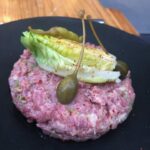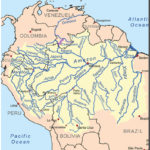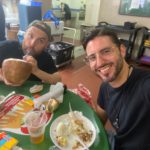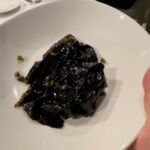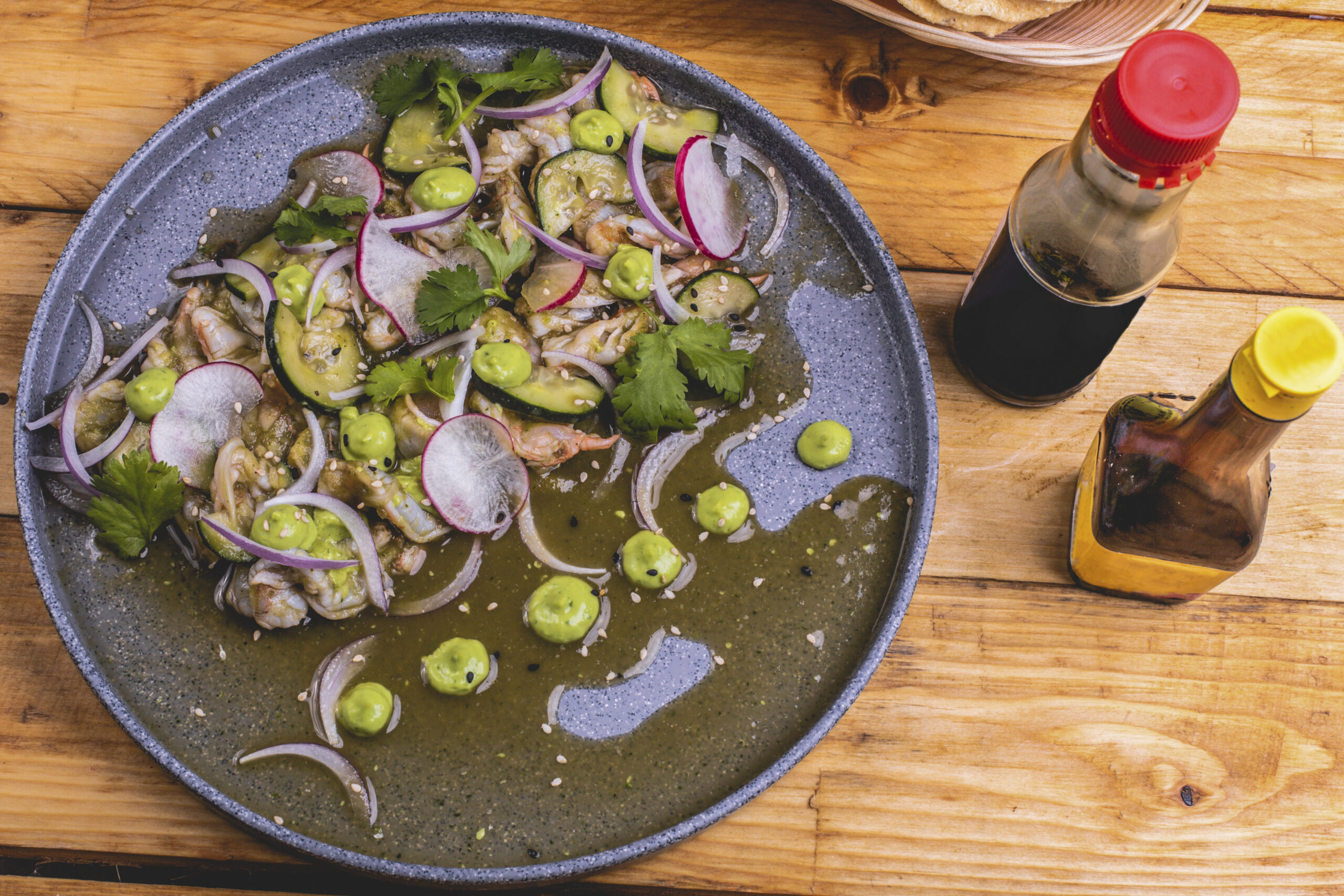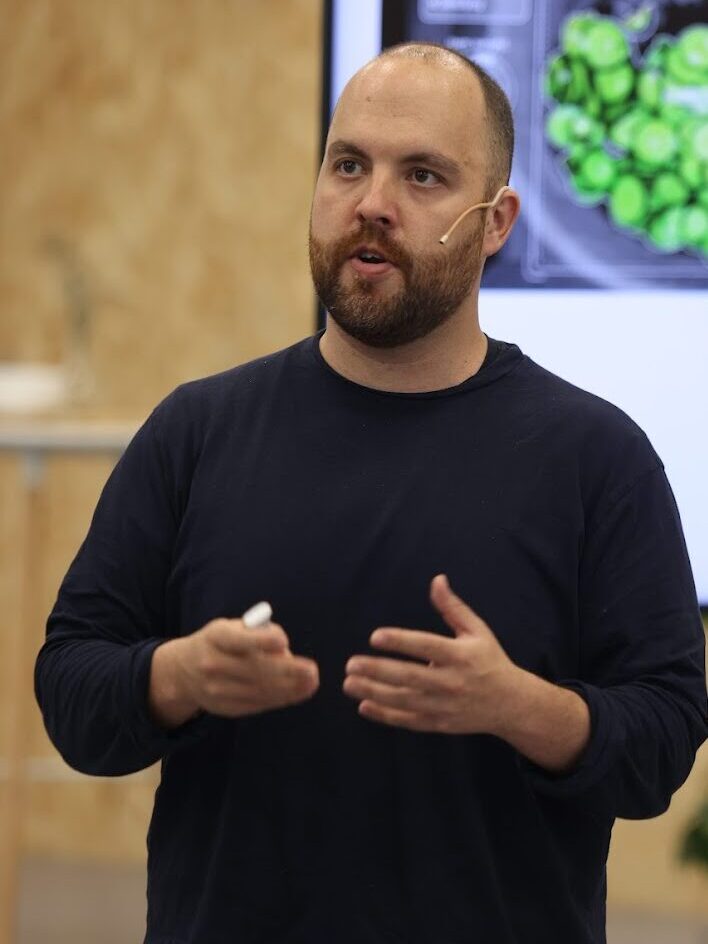On October 25, Ensenada will serve its final meal. The kitchen knives will fall silent. The lights will fade. Herrera isn’t stopping though. He’s moving past restaurants exploring new projects and discovering fresh ways to showcase flavor.
Before one chapter ends, let’s look back at how it all started.🎧 Revisit one of our earliest podcast episodes—our chat with Luis “Guayaba” Herrera—and discover the story that inspired Ensenada’s journey.
Introduction
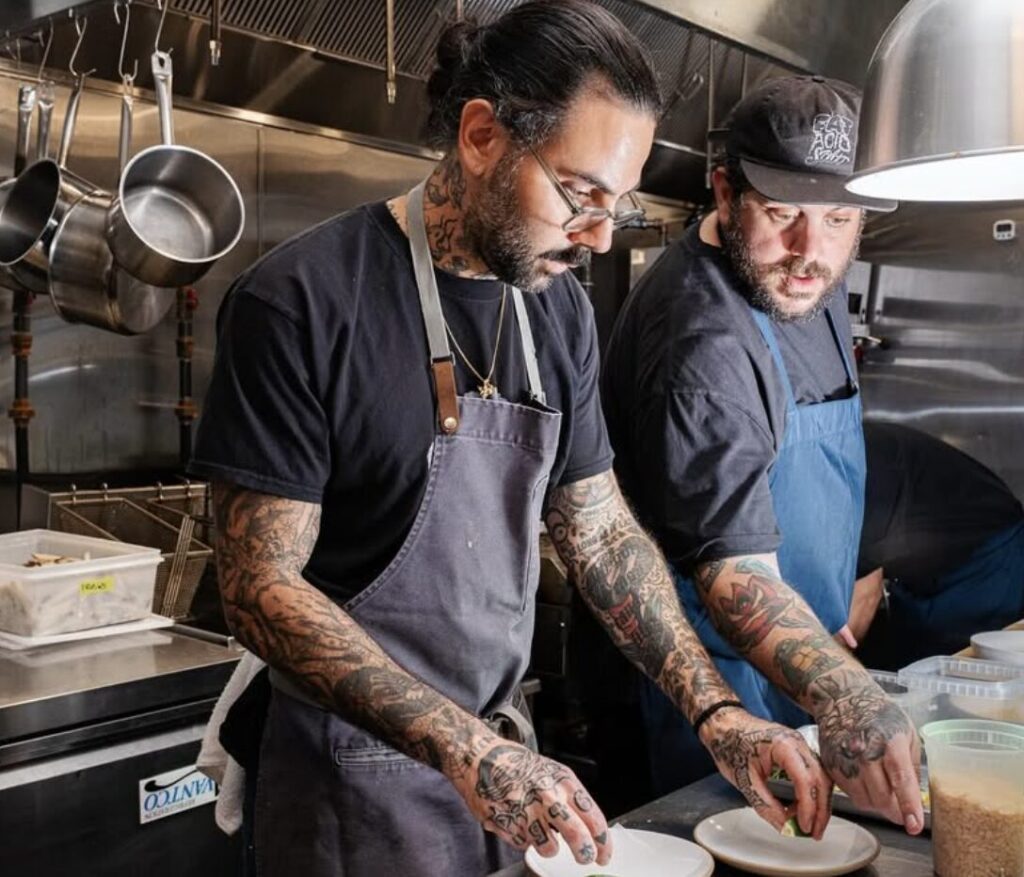
Luis “Guayaba” Herrera never set out to be a chef. He started as an engineer someone who worked with numbers and formulas. But hunger changed his path. In Venezuela, he studied at the Gastronomic Academy. There, he understood that cooking much like building needs a solid foundation. Years down the line in Brooklyn, he created Ensenada, a restaurant that let Latin American seafood have its own unique voice — vibrant, fresh, and untamed.
Herrera doesn’t lecture with his cooking. To him, being true to food isn’t about strict rules. It’s about showing care and honoring it.
Behind his kitchen doors, nationalism doesn’t echo. Instead, the scrape of knives working scallops fills the space. Limes hit cutting boards with sharp cracks. The soft sizzle sounds as aguachile touches cold fish.
The Idea: Latin Seafood with a Brooklyn Vibe
Ensenada balanced two worlds. It felt relaxed yet precise. Servers wore sneakers while tables showcased linen. Its atmosphere felt like a neighborhood bar, but the dishes felt like something worth traveling for.
Herrera described it as “95% Mexican,” though that number seemed playful. This was a mix shaped by migration, memories, and a refusal to fit into just one category.
The air carried the sharp scent of lime and the smoky aroma of toasted chiles. Bowls glimmered with fish just moments ago pulled from the ice. The place buzzed with energy rooted in local traditions but reaching for global flavors.
This wasn’t about creating something new. It focused on reinterpretation—taking a cuisine loved at home but often misunderstood elsewhere and giving it a voice that made sense to everyone.
Aguachile vs. Ceviche: Two Unique Styles of Curing
Ceviche – A Time-Honored Classic
Ceviche is Latin America’s signature dish. Born in Peru, it has evolved with every coastline it traveled. Herrera recalls eating a Venezuelan version as a child made with ají dulce, lime, cilantro red onion—a quick preparation that seemed to trap sunshine in a single bowl.
In Peru, leche de tigre shines as a bold mix of citrus, chili, and salt. It’s a jolt to the senses, like turning life’s intensity into a drink.
Aguachile – The Wild One
Aguachile doesn’t play it safe. It hits hard. It came to life in Sinaloa with humble roots as boiled meat in chili-infused broth. Over time, it grew into raw seafood served with a fiery punch of lime and heat.
Shrimp, scallops, or sometimes fish swim in a sharp green blend of serrano chilies and salt. It’s icy yet burning, primal yet fresh.
Herrera sees it as more than food. Ceviche works like structure in writing. Aguachile feels like raw vivid poetry — honest, unfinished, and rough.
Must-Try Plates at Ensenada
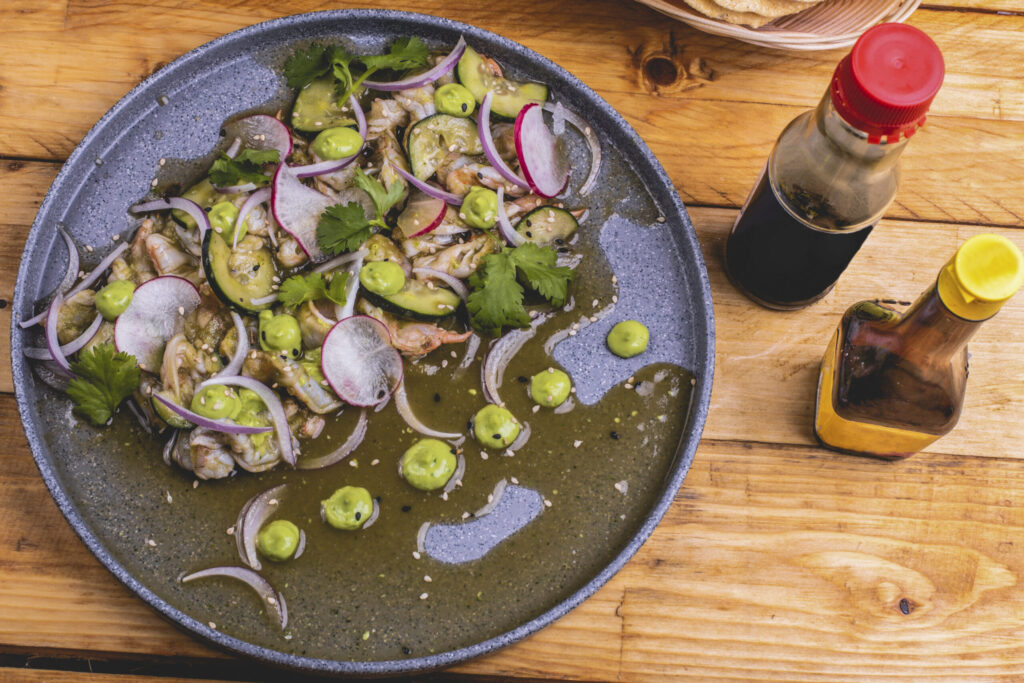
Vuelve la Vida
A Venezuelan memory shaped with a Mexican touch. Shrimp and octopus blend with citrus and spice to create this dish. While others leaned on clamato, Herrera added sweetness inspired by his roots — chaos that managed to find its harmony.
Scallop Tostada
Thin scallop slices sit on creamy labneh. Fried seeds are scattered above giving a sharp crunch. Jicama and green apple cut through the richness like sunlight piercing fog. Each mouthful refreshes the senses wiping the slate clean.
Fish al Pastor
Branzino coated in pineapple butter seasoned with adobo, and cooked over fire. It reimagines tacos al pastor without the tortilla, served to enjoy with a fork. Smoky sweet, tangy — balanced with purpose.
Softshell Crab with Melon Salad
This dish started by accident. One evening the papaya ran out so melon stepped in. The sweetness mixed with chili and stayed. Over time, it became a signature dish — one that feels like it was meant to happen.
The Sauce Sampler
Eight different sauces. Macha. Sikilpak. Guajillo. Verde. Each one tells the story of Mexico, from smoky heat to bright freshness. It is a journey for the senses rather than the mind.
Ingredients and Sourcing
The Sea and the City

Herrera designs his menu with precision. Every part matters, and every connection has purpose.
Fish comes from Long Island, Montauk, and New Jersey. These places bring cold waters and clean fresh catch. Chinatown’s Aquabase supplies rarer finds from Spain and Japan adding global flavors to a Brooklyn kitchen.
Local blends with global. Each dish shows how the ocean has its own languages.
Masa and Corn
Artisans at For All Things Good and Tamoa craft tortillas and tostadas using heirloom Mexican corn. The masa feels alive. It’s ground on volcanic stone made from ancient grains carrying a scent that feels like memories.
Herrera doesn’t see sourcing as just a task. For him, it’s almost like solving a moral puzzle. Ingredients aren’t just bought—they’re chosen to share stories of the earth hard work, and history.
Cultural Context and Criticism
Cooking Beyond Borders
A Venezuelan chef serving Mexican seafood in New York made people wonder.
Herrera responded and . To him, authenticity wasn’t about copying. It was about truly understanding. He didn’t claim his dishes were Mexican; he paid tribute to Mexico by respecting its roots.
Reception and Reality
Skeptics arrived doubtful but left speechless. Guests didn’t demand proof of origins. They cared about the taste.
At Ensenada, heat and acidity replaced debates. Respect was the only thing anyone valued.
Food as Identity
Latin American food isn’t one tale. It’s a mix of struggle and resilience coming together in dialogue.
Herrera finds connection in diversity. He sees unity in arepas and tortillas, ceviche and aguachile. These dishes share stories of survival, change, and pride. His cooking doesn’t divide; it unites.
Chef Philosophy
Herrera relies on memories instead of pride when he cooks. Each plate retells a moment—maybe a recipe from his grandmother, a meal from a Caracas street vendor, or an early morning market in Baja.
He distills food to its essentials: fish, acid, salt, and fire. Ingredients matter more to him than flashy techniques. His approach values simplicity, which feels liberating.
This is food rooted in its origins yet willing to evolve.
The Essence of Latin American Cuisine
Latin American food blends different layers—ancient traditions, the scars of colonization, and modern aspirations. In Mexico pre-Hispanic traditions stay alive in things like nixtamalization, mole, and the milpa. Venezuela, where Herrera comes from, holds onto its ties to Europe with ingredients like olives, capers, and wine in Christmas Hallaca.
Herrera wants a deep change in how flavor is approached. He aims to strip away foreign influences and uncover what has always been rooted in the land.
His aguachile delivers a clear message. It is raw and straight to the point honoring the natural offerings of the earth and the water instead of clinging to inherited traditions.
Closing Thoughts – Where Latin Seafood is Headed
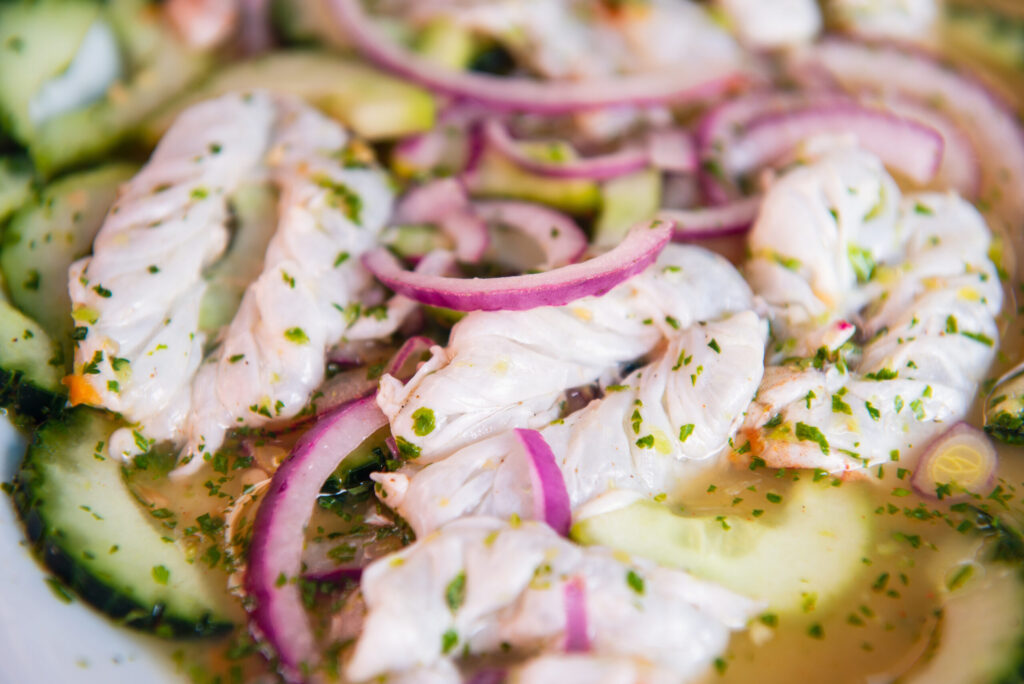
In Brooklyn, miles away from Baja or Caracas, Ensenada shared a story bigger than just the chef behind it. It spoke of movement—of migration, survival, and adapting to new places. It celebrated seafood touched by citrus, served with care. It was about taking traditions and making them your own.
For those eating to find meaning rather than following trends, this felt like the real uncharted territory—not about being “authentic,” but being truthful.
Through kitchens like this, chefs connect worlds with every dish they create. In the heat of chiles and the sharpness of lime, you can feel an entire continent finding its voice.
Pot Luck Food Talks is a global podcast exploring the crossroads of food, culture, and creativity — hosted by chefs, storytellers, and curious eaters from around the world.
🎧 Listen to our latest episodes — click here
🍷 Join a food tour in San Sebastián with Erich Eichstetter — click here
💼 For collaborations, consulting, or advertising inquiries — get in touch here


